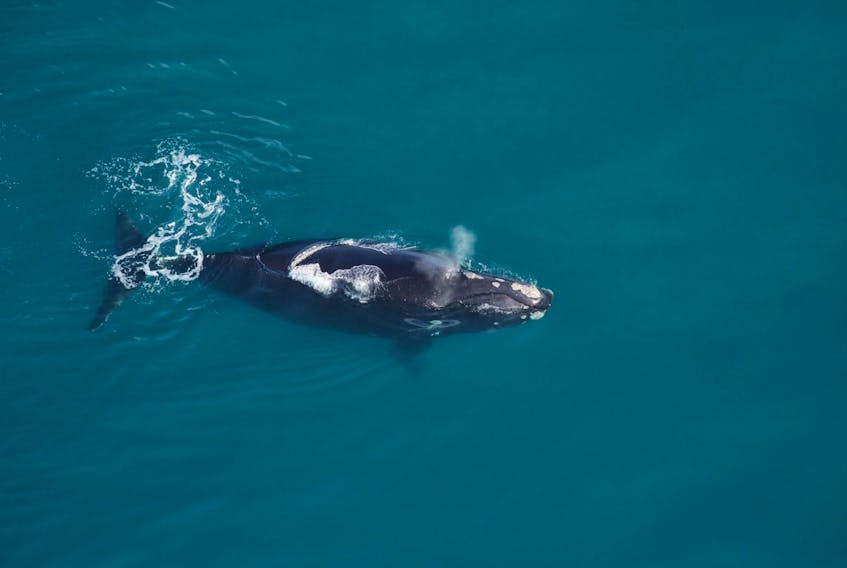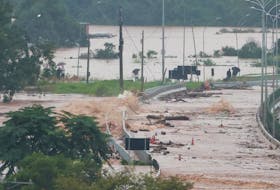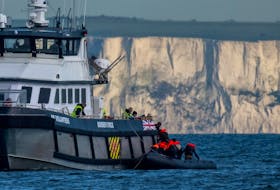The youngest of four baby right whales born this calving season has already been injured.
The newborn was spotted off the coast of Georgia, U.S. earlier this month with its mother and had already suffered serious injuries, the NOAA Fisheries Service said in a statement.
The days-old calf was seen to have two parallel S-shaped cuts around its mouth, which are believed to be from the propeller of a vessel.
Wildlife pathologist Dr. Laura Bourque said the injury could be life-threatening to the calf.
“The impact these injuries could have on the calf depends on the depth of the injuries and the structures involved. The injuries appear to involve the mouth and lips and extend ventrally towards the eye. If the calf’s ability to feed, or if the blowhole or eye is affected, this would have a severely negative impact on a rapidly growing calf’s ability to survive.”
When asked if temporarily treating the whale would help, Bourque said it would likely only do harm.
“This calf should not be removed from its mother. Separation at such a critical life stage, which would be extremely stressful for both the mother and the calf, and ultimately would still end in the calf’s death due to a suppressed immune system. Trying to fix whales after they are injured will never be an acceptable scenario. We need to focus on preventing injuries from happening in the first place.”
Tonya Wimmer, the executive director of the Nova Scotia-based Marine Animal Response Society, or MARS, said the organization was heartbroken to hear the news.
“Each year, we always look forward to the calving season for the right whales and already hearing a fourth birth was excellent. But the news of the fourth calf was devastating for us. We know it was only born recently, and having an injury so serious at such an early stage, it will definitely have complications.”
“The injuries it sustained to its mouth only days after its birth really shows us what these animals face from the moment they are born,” said Wimmer.
The biggest threats to right whales and many other animals are man-made, said Wimmer.
“The two main issues causing animals like the right whale to die are deaths due to vessel-related injuries and fishing gear. It’s been the two main causes of death to this species and other animals for a number of years.”
The species of the North Atlantic right whales have been classified as endangered under the Endangered Species Act since 1970. They are the world’s most endangered whale species, with only 400 left in the oceans, according to the NOAA Fisheries Service’s website.
“The calving season is a crucial part of the survival of these whales. There have been many fluctuations throughout the years. We saw as many as 10 births per year, for the most part, there was even one year where there was a birthrate in the 30s, which is unheard of. But due to stress and mortality rates, we’ve seen the number decrease. In 2017, there were actually no births whatsoever,” said Wimmer.









